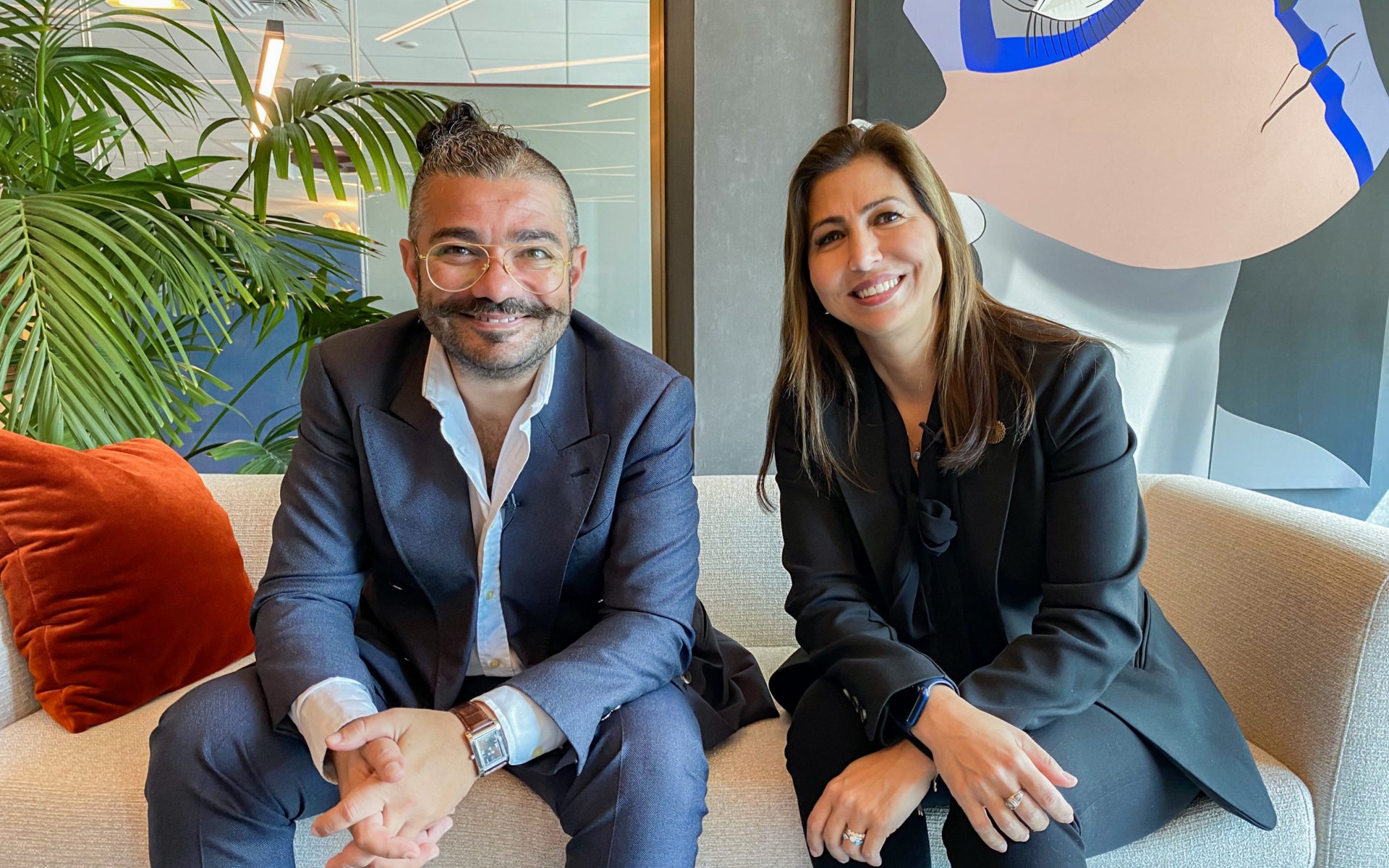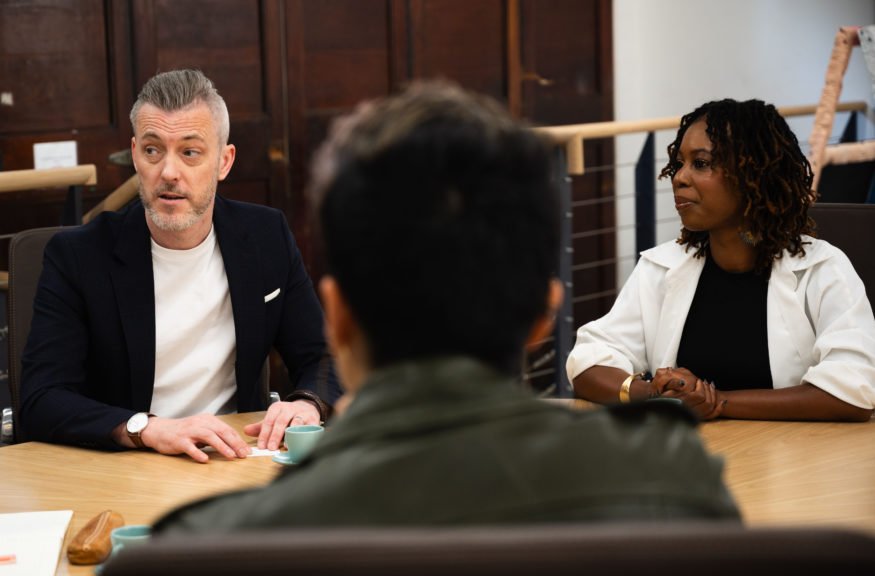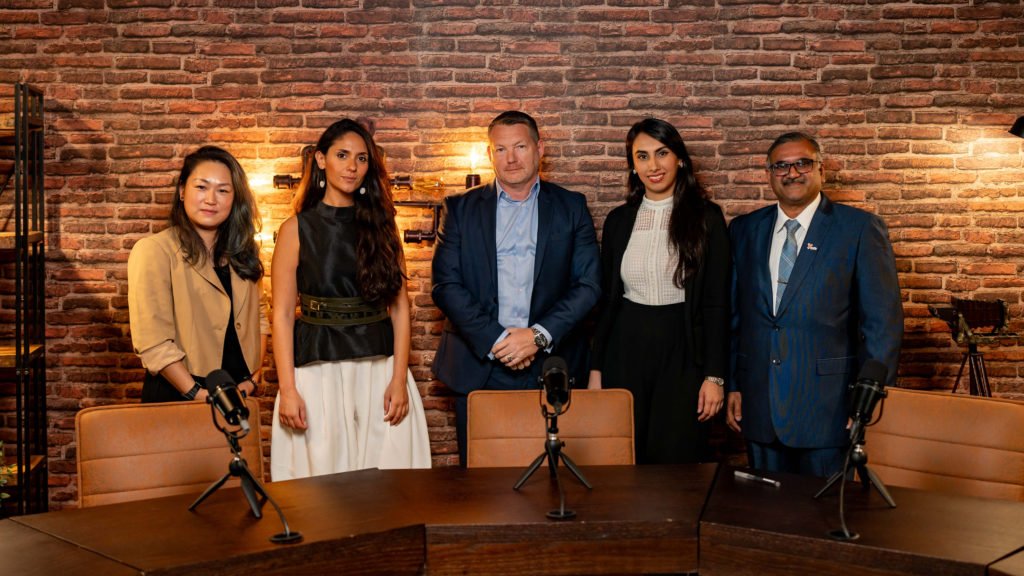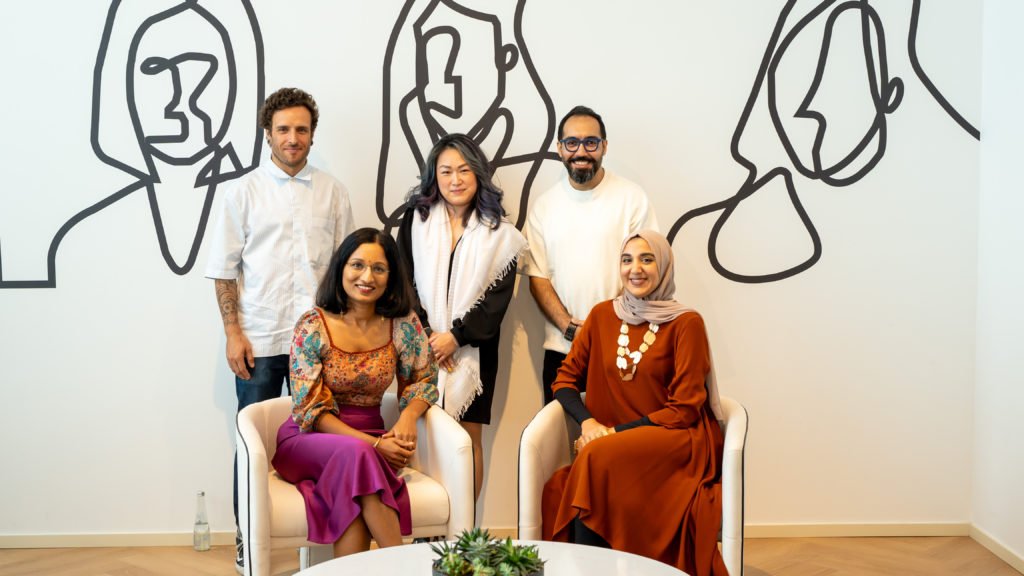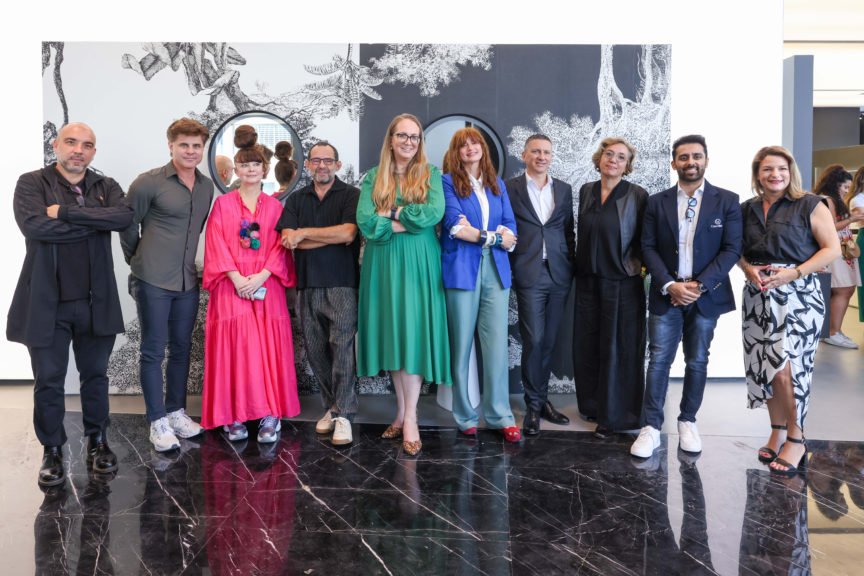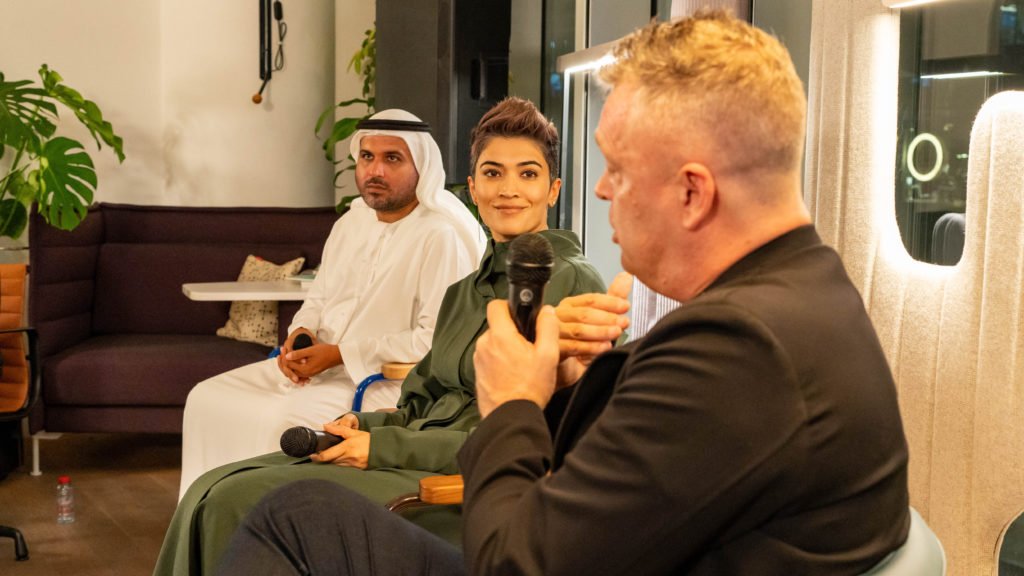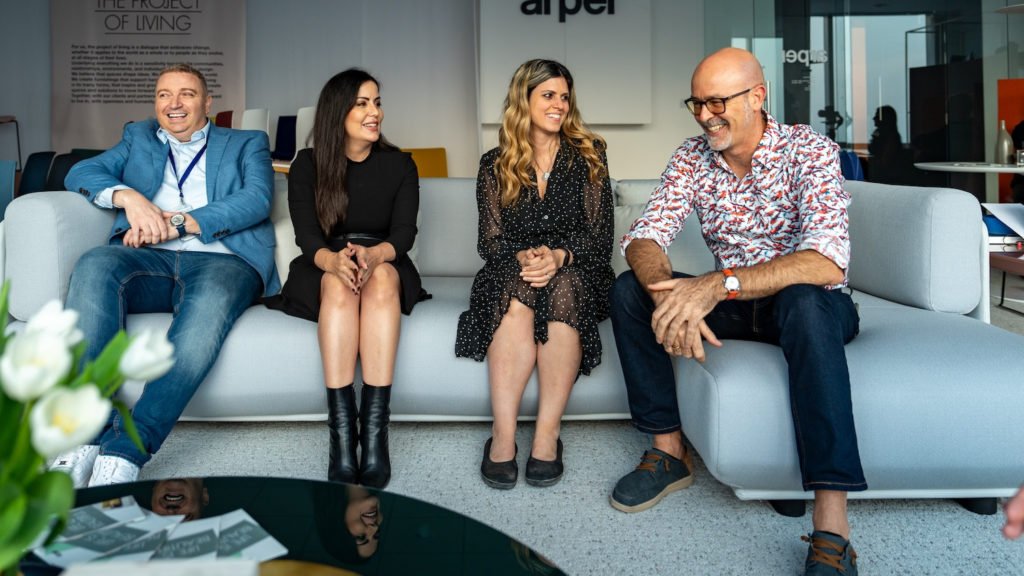We’re constantly impressed by iGuzzini’s commitment to innovation without sacrificing the principles of sustainable development. As an international leader in the field of architectural lighting that operates according to these principles, using light as an element of social innovation has always been a distinctive trait of iGuzzini. Their core philosophy and product strategy incorporate four of the seventeen Sustainable Development Goals laid out by the UN – clean and accessible energy, sustainable cities and communities, responsible consumption and production, and climate action. They were the first to talk about light pollution in the 1990s with creative and impactful advertising campaigns, furthering the cause of sustainable development via lighting.
In this roundtable, we discuss the role of lighting in sustainable development, and how the design industry can do more, and do better towards meeting sustainable goals.
THE EXPERTS
From left to right: Sergio Padula, Technical Director Middle East & Africa, iGuzzini; Dina Storey, Head of Sustainability Operations, EXPO 2020 Dubai
What is Sustainable Lighting?
“Our entire approach to social innovation is via sustainable lighting, but there’s a misunderstanding as to what sustainable lighting means,” says Sergio Padula Technical Director Middle East & Africa, iGuzzini. “Within lighting, people assume we’re only referring to the recyclability component of our products. That’s just not true. We have three key focus areas – people, environment, and business – and we always keep the first two in mind when thinking about the third. We follow this even in aspects of our business, such as training and logistics.”
“I wholeheartedly agree,” adds Dina Storey, Head of Sustainability at EXPO 2020. “People think that sustainability refers to the environment alone, but it is social and economic as well. It’s like three pillars, and one cannot won’t work without the other two. For example, if you forget something like gender equality, then you’re losing out on the happiness of your employees. If your business isn’t making money, then how can you sustain your projects?”
“At the end of the day, we’re not an NGO,” says Sergio. “We work for profit. But that doesn’t mean we can’t do good. We look carefully at our investments, and we assign six percent of our revenue to R&D and sustainable development. If the numbers make sense, we’re all for it. We always look long term, a good example being our marketing campaign on light pollution back in the nineties.”
On the topic of sustainable development, we can’t help but be reminded of the Dark Sky principles that we hear about from the lighting industry so often. Having always wondered how they’re connected to sustainable development, we figured this would be a great opportunity to ask our expert panel.
“Simply put, Dark Sky is a set of principles to follow for responsible lighting in projects,” explains Sergio. “There are certain metrics and parameters that have to be respected. It covers the intensity, colour or temperature of the lighting as well. Plus, all of the lighting used must serve a purpose. However, these principles can at times prove to be a bit rigid. The intention is very good, but there should be some balance.”
Dina further adds, “It goes back to balance. We do need lighting, especially from a safety aspect, but there can be reasonable policies in place. What I’m seeing and finding interesting is that the private sector is now taking the lead on this. Case in point EXPO 2020! Change can come from legislation or the private sector. But if the private sector is more in tune with it and leading the change, then it becomes a lot easier for adoption in other areas, and it becomes a best practice.”
“We’re part of a global internship program as well. We want to lift the younger generation and welcome communities from different universities all over the world, from the Middle East to Europe to North America. We train them in our values of sustainability and it might take time but we’re starting from the roots.”
– Sergion Padula, Technical Director, Middle East & Africa, iGuzzini
Strategies for Change
“It’s a two-pronged approach to driving change,” says Dina. “You can have legislation and policies in place, but it will only take you so far if mindsets don’t change. You need private sector support and awareness. From an economic perspective, it’s not going to work if the business end isn’t feasible; they’re all interlinked at the end of the day.”
“As a company, we try to be involved with global level initiatives, for example, the lighting European Association in Brazil,” says Sergio. “Normally, we try to be involved with all major associations in Europe, especially in Italy. We’re working with the Red Sea project, but mostly because of our expertise and pedigree. We try to be as impartial as possible, and finance research and R&D. We recently completed a program about human-centric design with Copenhagen University, which is another example of how data-driven this organisation is. This is what helps us make a strong case when consulting.”
“It’s very important to have credibility or data to back a proposal or product for the Middle East,” adds Dina. “A lot of companies are confident based on performance in other regions. But the landscape here is different, and companies that take a localised approach are the ones that win. You have to build trust but have the data as well.”
“We’re part of a global internship program as well,” says Sergio. “We want to lift the younger generation and welcome communities from different universities all over the world, from the Middle East to Europe to North America. We train them in our values of sustainability and it might take time but we’re starting from the roots.”
Sustainable Lighting in Practice
We learn that, as a brand, they use solar panels to run their factory and renewable energy to run the production line. “As a world class manufacturer, we’ve committed to a certain level of renewable energy and sustainability to produce our products, this can be anything from energy to the paint we use,” explains Sergio. “A project that we started a couple of years ago that’s now in production is sustainable packaging. This means reducing the use of plastic, paper, cartons and so on. The instructions sheets are now through the use of QR codes. In fact, we are the first lighting manufacturer, probably one of the first worldwide, that has decided to not print a physical catalogue anymore. It’s an amazing feat, but was a very tough decision initially, as the catalogue was 900 pages long and published in 35 languages! But we decided that from 2022, no more printing media, that it was not the way to go. Because the impact on the printing and on the shipping and everything was too much! Our sales and marketing team weren’t happy. But this was our mission and focus, and eventually everyone was on board.”
“Even for those who are committed to sustainable development, people have to understand that this process isn’t as easy as it sounds,” says Dina. “You can’t do it overnight, and it requires input from all stakeholders. The EXPO itself took five years, so when people offer two years for their plans, I think they’re not seeing the whole picture.”
“It’s very important to have credibility or data to back a proposal or product for the Middle East. A lot of companies are confident based on performance in other regions. But the landscape here is different, and companies that take a localised approach are the ones that win. You have to build trust but have the data as well.”
– Dina Storey, Head of Sustainability, EXPO 2020
So how difficult is this process, and how much capital is involved? It’s a burning question in most minds.
“People think sustainability costs more, that really isn’t the case,” says Sergio. “You have to spend money anyway to develop a new product, so you might as well make it sustainable. In fact, from our experience, you save money. For example, when buying a bulb, a regular consumer will buy a traditional bulb over an LED lamp because of the upfront cost. But LEDs are so much more efficient, long-lasting, and run on much less energy.”
“At the end of the day, the consumer has a choice,” says Dina. “When you work on large scale commercial projects, if you are a developer, you want to know if there’s an upfront cost to doing it more efficiently. But I think the issue that I see when it comes to a sustainability expert, like myself, going out and working with a developer, is that you have to show them the long term efficiencies and the long term cost-benefit analysis. And sometimes (I realise I’m criticising my own sphere of professionals) they go in with a superficial approach, but they don’t show the efficiencies and the numbers. They don’t show how I’m saving you thousands of dollars over these many years. And you have to be very frank with the numbers and what the payback period will be, as well as your future economic value.”
What Does The Future of Lighting Look Like?
“Light is energy that flows into an environment or a space and interacts with what is in the space,” explains Sergio. “Our brain takes in this light and forms a visual and mental perception of the space. With new technology, we’re even more connected than ever and have a much better understanding of how light affects our life. We must use all the tools at hand to create a more sustainable environment that includes diversity for all people as well”, says Sergio.
